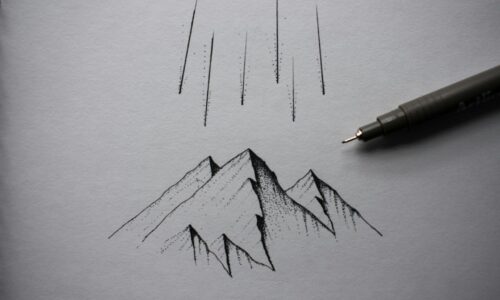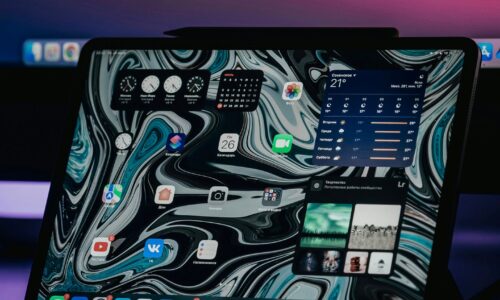In a world where technology is moving faster than a speeding drone, it’s no surprise that art has also decided to get a little more… well, kinetic. Enter kinetic art — the genre that’s changing the way we see art, literally. No longer confined to static paintings or traditional sculptures, kinetic art is about bringing things to life, with a touch of movement, mechanics, and a whole lot of creativity. It’s where innovation meets tradition in the most dynamic way possible, blending the future with the past.
Imagine walking into a gallery and witnessing a sculpture spin, sway, or even dance before your eyes. These aren’t your average, stationary pieces of art — these are living, breathing works that rely on motion and mechanical ingenuity. Now, we’re not talking about turning a Picasso into a robot (though, how cool would that be?). We’re talking about collaborating with mechanical brands and engineers to create art that’s not just visually stunning but physically active, engaging all your senses.
The Marriage of Innovation and Tradition: What Is Kinetic Art?
At its core, kinetic art is about capturing movement in a way that challenges traditional concepts of what art can be. Instead of just sitting there, waiting for you to admire it, kinetic art demands your attention by moving, changing, and evolving as you observe it. And guess what? It’s not just art for the eyes — it’s art for the mind. These creations often rely on mechanical systems, motors, and even interactive technology, bringing the past and future together in the most unexpected of ways.
For centuries, art has been static. Think about it — paintings, sculptures, and even architecture have all stood still, offering a one-sided, freeze-frame moment. But in the realm of kinetic art, things are different. Imagine a moving sculpture that changes form or a dynamic installation that reacts to the environment. Whether it’s spinning, rotating, or responding to sound and light, kinetic art is as much about technology as it is about tradition. The best part? It brings an entirely new layer of meaning to the work, offering an experience that’s constantly in motion.
The Role of Engineers in Kinetic Art
So, what do engineers have to do with art? Well, it turns out, a lot. Traditional artists are fantastic with their brushes, chisels, and sketchpads, but when it comes to incorporating motion, they often need a little technical help. This is where engineers come in. Whether it’s creating an intricate motor system to make a sculpture spin or designing interactive components that respond to the viewer’s movements, engineers help bring kinetic art to life.
By collaborating with mechanical brands and engineers, artists can turn their ideas into tangible, functioning masterpieces. This partnership isn’t just about making things move; it’s about pushing the boundaries of what art can do. Think of it as art on steroids — powered by gears, motors, and smart tech.
One particularly exciting example of this collaboration is when kinetic artists team up with mechanical engineers to create large-scale outdoor installations. These pieces can use wind, gravity, or even the viewer’s own actions to trigger movement, making them incredibly engaging. Imagine walking into a park and suddenly finding yourself surrounded by a series of sculptures that sway, spin, or even mimic your gestures. These installations challenge the idea that art is something to be passively observed, instead inviting you to be part of the creative process.
Kinetic Art in the Digital Age
In the 21st century, kinetic art is no longer just about moving parts — it’s about integrating technology into the artwork itself. From augmented reality to virtual installations, the digital world has opened up endless possibilities for creating art that goes beyond physical movement. Through the use of sensors, digital projections, and interactive software, kinetic art can now be experienced in entirely new ways.
Picture this: You step into a room, and a virtual sculpture begins to form before your eyes. The piece shifts and adapts based on the position of your body, creating a unique experience for every viewer. This is kinetic art as it exists in the digital age — a hybrid of real-world mechanics and virtual interaction. Engineers and tech companies are now working alongside artists to create hybrid works that fuse the digital and physical worlds, making the future of kinetic art even more exciting.
Collaborating with Mechanical Brands: A Match Made in Artistic Heaven
The future of kinetic art lies in collaboration — specifically, collaborations between artists and mechanical brands. These partnerships allow artists to access cutting-edge technologies, motors, and components that they wouldn’t otherwise have at their disposal. Whether it’s a partnership with a company that specializes in robotics or an engineer who can design the perfect motor for a spinning sculpture, these collaborations allow kinetic artists to push the limits of their creativity.
But it’s not just the artists who benefit from these collaborations. Mechanical brands gain exposure and credibility by aligning themselves with innovative, forward-thinking art projects. Imagine a brand known for its high-tech mechanical parts teaming up with an artist to create a stunning kinetic installation. It’s a win-win situation, where the brand gets to showcase its technology in an artistic context, and the artist gains access to the tools needed to create groundbreaking work.
These collaborations can also help artists break into new markets. By teaming up with mechanical brands, they can produce limited-edition kinetic art pieces or even mass-market versions that appeal to a broader audience. Think about the possibility of creating kinetic art that doubles as home décor — sophisticated, functional, and designed to move. It’s the ultimate fusion of form and function.
Kinetic Art: The Future of Heritage
Now, you might be wondering — how does kinetic art fit into the broader theme of “The Future of Heritage: Where Innovation Meets Tradition”? Simple. Kinetic art is the perfect blend of the old and the new. It honors traditional art forms like sculpture and installation while embracing the future of art by incorporating technology, mechanical systems, and digital media.
Kinetic art doesn’t just look to the future — it also respects the traditions of craftsmanship and design that have shaped the art world for centuries. When an artist collaborates with mechanical brands or engineers, they’re not only pushing the boundaries of artistic expression — they’re also preserving and reinterpreting traditional art forms for a new generation.
By embracing technology and motion, kinetic art creates a space where innovation can coexist with tradition. It’s a reminder that the future of art doesn’t have to be about abandoning the past but rather enhancing and evolving it to meet the needs of a changing world.
The Kinetic Future is Now
As we look ahead, kinetic art is poised to become an integral part of the future of the art world. Thanks to collaborations between artists, mechanical brands, and engineers, moving sculptures and installations will continue to captivate audiences, blending the best of tradition with the limitless possibilities of innovation. It’s a thrilling time for art — and a great time to get moving!
Kinetic Art, Moving Sculptures, Dynamic Installations, Mechanical Brands, Engineers, Innovation Meets Tradition, Future of Art, Digital Age, Collaboration, Mechanical Components, Kinetic Art in the Digital Age, Interactive Art, Augmented Reality Art




